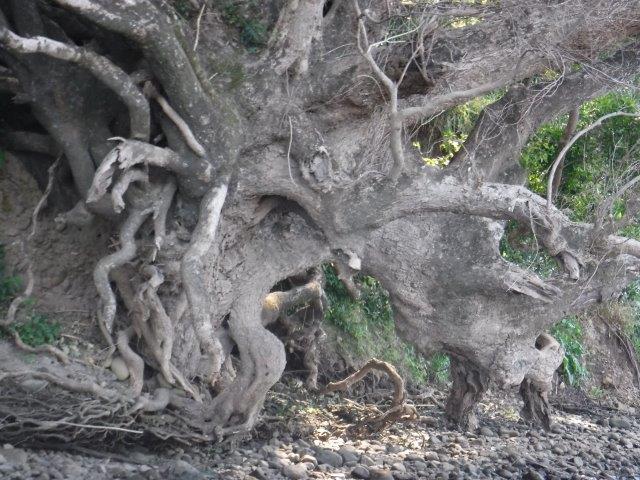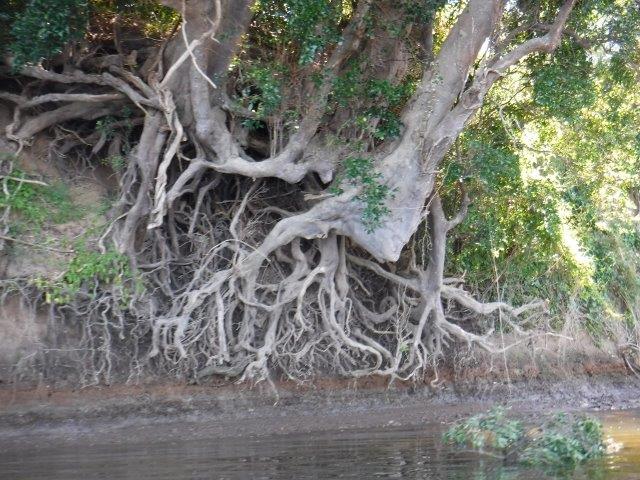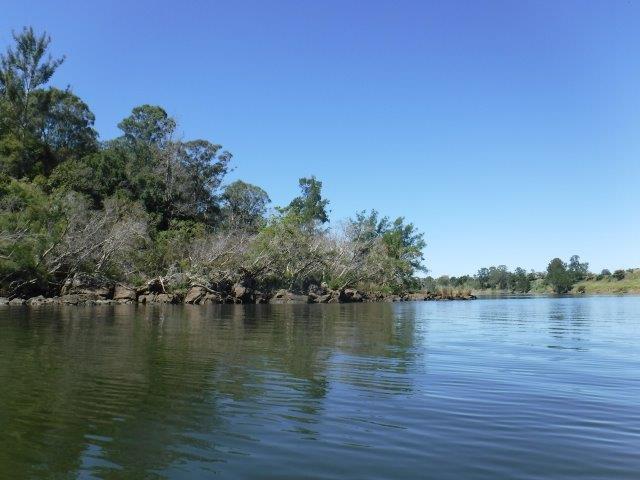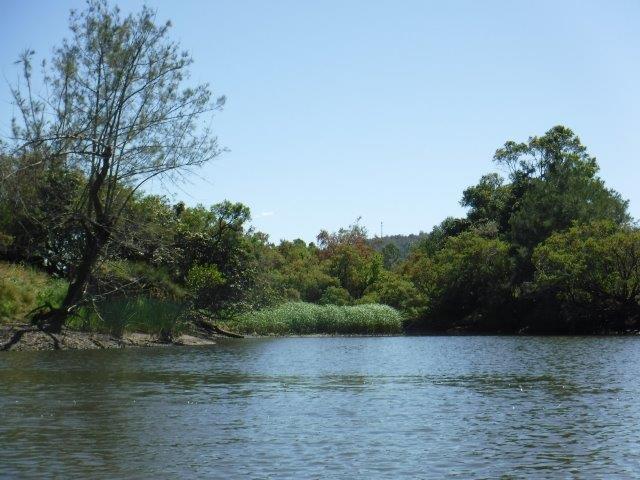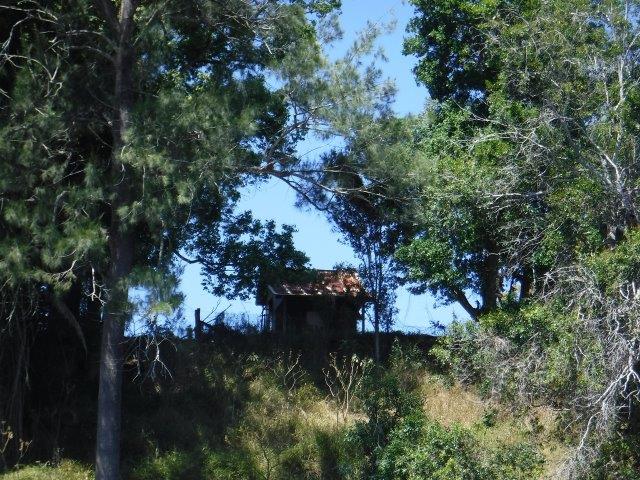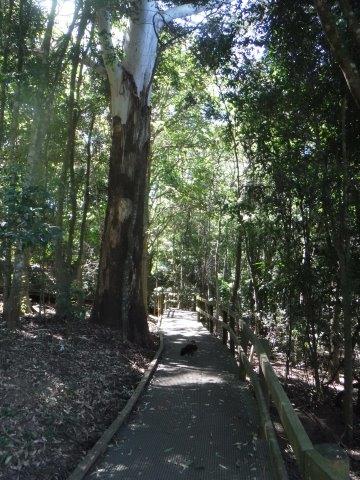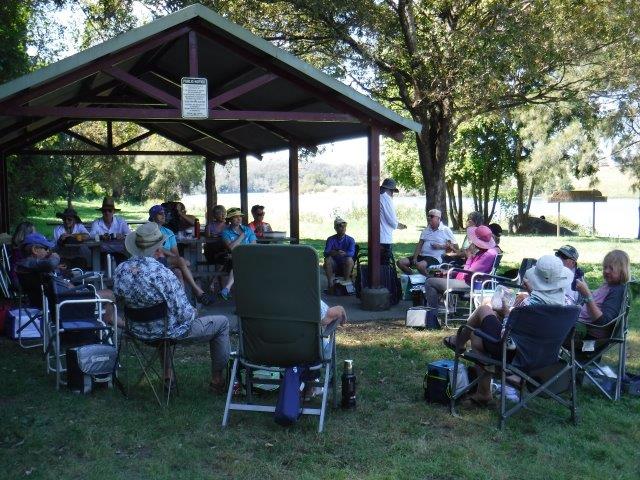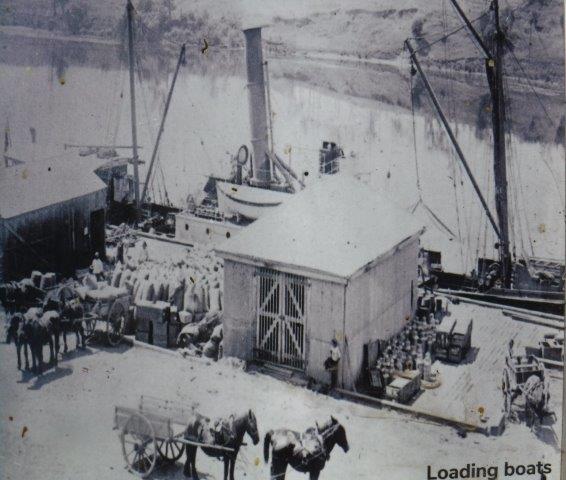Hi everyone,
20 of us turned out last Sunday on what was a glorious morning on the upper Manning River down at Wingham Brush.
It is both a beautiful & historic stretch of river & we paddled down & into Cedar Party Creek & then on down for a way towards Tinonee. Along the way there were some old timber shacks perched on top of the high banks & some amazing trees roots hanging on for dear life.
Sadly it was too shallow to get all the way up the creek, but it was just lovely being out on the water. The old wharf ( see photo ) is one of only a few remaining remnants of the Manning River’s historic past ( if you are interested in the history of the area, a visit to the Cundletown Museum is well worth the trip ). The wharf was built in the 1830’s from turpentine timbers & went on to become a major shipping port in 1835. Timber & farm produce from surrounding areas was transported downstream from the wharf, at first by punt & then by sailing vessel. Later, steamers ventured upriver allowing timber to be shipped directly from Wingham to New Zealand ( see historic photos ). Butcher, baker & grocery boats regularly departed the wharf providing vital supplies to isolated farming families. Cream boats collected dairy products & transported them downstream to the Taree Butter Factory. The local paper of the day carried reports of up to 400 people making their way to the wharf on many a New Year’s Day for the annual excursion to Harrington, collecting more people along the way. The steamers were decked out in bunting & awnings & a brass band entertained the passengers while funds were raised at the same time for the Manning River District Hospital.
Adjacent to the ramp, wharf & picnic area is the Wingham Brush Nature Reserve which has an interesting history. A boardwalk takes you through this lovely shady Reserve which includes a giant Moreton Bay fig tree. The Nature Reserve comprises 9ha of lowland tropical rainforest. This remnant, plus the 5ha of Coocumbac Island Nature Reserve are the most southern representatives of this type of rainforest of which less than 100ha remains in NSW today. I extracted the following information from the Australian Association of Bush Regenerators website ( www.aabr.com.au ).
Wingham Brush was the first Australian attempt to restore a rainforest. It was funded by the local council & grants. John Stockard & his team started restoration work in 1980. A team of six put in 24 hours per week & the program began under the auspices of the National Trust. This article stated that the major goal of rainforest restoration was to gain a weed free canopy & close it in. While acknowledging that the bush could never be returned to its Dreamtime state, a lot could be done to keep the ecological processes going. Exotic trees such as Camphor laurels presented the team with a long term management problem & were subsequently cut & milled, yielding a profit which was ploughed back into the project. Exotic vines in the crowns of the trees, such as Cats Claw Creeper, Madeira Vine & Balloon Vine presented a huge challenge & Stockard described the project as “like a war on weeds”. He went on to say that..” the most exciting time was in the early stages when we rescued living trees from under the vines enabling them to survive”. A bicentennial grant enabled the reserve to be fenced & the brush turkeys that wander about were brought in without any consultation. Stockard goes on to say that one of the biggest problems working in the Brush was floods. For kms upstream the valley is choked with weeds & floods bring these downstream into the middle of the Reserve. From 1991 – 95 the Brush was affected by drought which thinned the canopy & stressed the trees. In 1995 the worst frost in 25 years froze most of the young trees to the ground. The giant Moreton Bay figs are home to a permanent breeding population of the endangered grey-headed flying fox & Wingham Brush is an important ‘maternity camp’ for them. The flying foxes transport seeds of a wide variety of rainforest plants up to 40 kms between camps connecting isolated remnants of other rainforest gene pools. So, this Nature Reserve has its own fascinating back story, thanks to those regenerators who have put so much work into it.
In non COVID times, Wingham host two large annual festivals; the Wingham Akoostik Music Festival & the Bonnie-Wingham- Scottish Festival.
After our paddle we enjoyed a picnic lunch in the shade above the old wharf.
We hope you enjoyed the morning.
Cheers
Caroline & Bill



